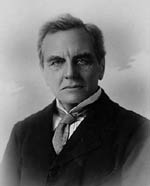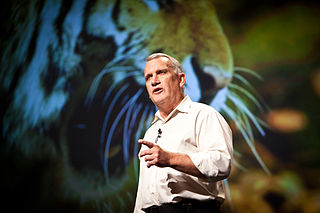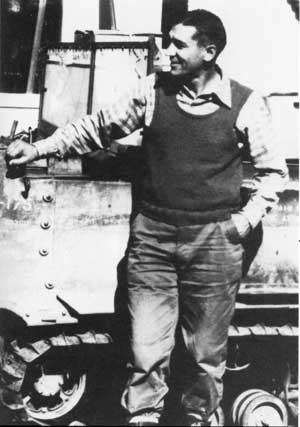
The Back River, formerly Backs River, is the 20th longest Canadian river and is located in the Northwest Territories and Nunavut. It rises at an unnamed lake in the North Slave Region of the Northwest Territories and flows more than 974 km (605 mi) mostly through the Kivalliq Region, Nunavut, to its mouth at the Arctic Ocean in the Kitikmeot Region of Nunavut.

Aldo Leopold was an American writer, philosopher, naturalist, scientist, ecologist, forester, conservationist, and environmentalist. He was a professor at the University of Wisconsin and is best known for his book A Sand County Almanac (1949), which has been translated into fourteen languages and has sold more than two million copies.

The Kivalliq Region is an administrative region of Nunavut, Canada. It consists of the portion of the mainland to the west of Hudson Bay together with Southampton Island and Coats Island. The regional centre is Rankin Inlet. The population was 11,045 in the 2021 Canadian census, an increase of 6.1% from the 2016 Census.

Archie Fairly Carr, Jr. was an American herpetologist, ecologist, and conservationist. He was a Professor of Zoology at the University of Florida and an acclaimed writer on science and nature. He brought attention to the world's declining sea turtle populations due to over-exploitation and habitat loss. Wildlife refuges in Florida and Costa Rica have been named in his honor.

John Hornby (1880–1927) was an English explorer, best known for his expeditions in the Arctic region of northern Canada, notably in the "Barren Lands" in the Northwest Territories of Canada.

The Thelon River stretches 900 kilometres (560 mi) across northern Canada. Its source is Whitefish Lake in the Northwest Territories, and it flows east to Baker Lake in Nunavut. The Thelon ultimately drains into Hudson Bay at Chesterfield Inlet.

William Temple Hornaday, Sc.D. was an American zoologist, conservationist, taxidermist, and author. He served as the first director of the New York Zoological Park, known today as the Bronx Zoo, and he was a pioneer in the early wildlife conservation movement in the United States.
Arthur Hawthorne Carhart (1892–1978) was a US Forest Service official, writer and conservationist who inspired wilderness protection in the United States. He was one of the first to realize the importance of conservation and became a nationally recognized authority on conservation practices.

Prof William Johnson Sollas PGS FRS FRSE LLD was a British geologist and anthropologist. After studying at the City of London School, the Royal College of Chemistry and the Royal School of Mines he matriculated to St. John's College, Cambridge, where he was awarded First Class Honours in geology. After some time spent as a University Extension lecturer he became lecturer in Geology and Zoology at University College, Bristol in 1879, where he stayed until he was offered the post of Professor of Geology at Trinity College Dublin. In 1897 he was offered the post of Professor of Geology at the University of Oxford, which he accepted.

Alan Robert Rabinowitz was an American zoologist who served as the president, CEO, and chief scientist at Panthera Corporation, a nonprofit conservation organization devoted to protecting the world's 40 wild cat species. Called the "Indiana Jones of Wildlife Protection" by Time, he studied jaguars, clouded leopards, Asiatic leopards, tigers, Sumatran rhinos, bears, leopard cats, raccoons, cervidae, and civets.

Aldo Starker Leopold was an American author, forester, zoologist and conservationist. He also served as professor at the University of California, Berkeley for thirty years. Throughout his life, Leopold was active in numerous wildlife and conservation groups throughout the United States.

The Thelon Wildlife Sanctuary, at 52,000 square kilometres (20,077 sq mi), over twice the area of Belgium, is the largest wildlife refuge in Canada. It is located in northern Canada's Arctic region, north of the tree line, straddling the Northwest Territories and Nunavut, halfway between Baker Lake and Yellowknife, and bordered on the north between the Baillie River on the west and the Consul River at the east by the Back River. It is the namesake of the Thelon River, whose river valley is resplendent with boreal forest biological diversity, hence its identification as a "Biological Site of Universal Importance" by the International Biological Program (IBP) in the 1960s.
Joseph Dewey Soper was a widely traveled Canadian Arctic ornithologist, explorer, zoologist, and prolific author.
Iain Douglas-HamiltonCBE is a British zoologist. He is an authority on elephant behaviour and conservation. He attended Gordonstoun School, and later Oxford University where he earned a degree in Zoology and a D.Phil studying the Ecology and Behaviour of the African Elephant. His work in the 1960s paved the way for much of today’s understanding of elephants and current conservation practices. During the 1970s, he investigated the status of elephants throughout Africa and was the first to alert the world to the ivory poaching crisis. He chronicled the diminution of Africa’s elephant population by half between 1979 and 1989 and was instrumental in bringing about the world ivory trade ban. In 1993, Douglas-Hamilton founded Save the Elephants (STE) a charity dedicated specifically to elephants. Since that time, Save the Elephants has conducted research on elephant across Africa and has increased public awareness of the many dangers that threaten elephants and the habitats in which they live. Fundamental to his work at STE, Douglas-Hamilton pioneered GPS tracking of elephants in Africa, which has become a standard and widely emulated survey technique; it also guides the deployment of rangers to protect vulnerable and key elephant populations. Douglas-Hamilton and his wife, Oria, have co-authored two award-winning books, Among the Elephants (1975) and Battle for the Elephants (1992), and have made several television films. Dr. Iain Douglas-Hamilton was awarded the 2010 Indianapolis Prize, one of the world's leading awards for animal conservation. In 2013 The Elephant Crisis Fund was established to confront the threat to elephants by supporting the most urgent, important and catalytic projects across the crisis to stop the killing, stop the trafficking and end the demand for ivory. In October 2014 he was presented with the George B Rabb Conservation Medal by the Chicago Zoological Society (CZS) for his authoritative work to benefit African elephants. In 2015 he was awarded the Commander of the British Empire and was presented the Lifetime Achievement Award by San Diego Zoological Society with most recently being awarded the Tanzanian Wildlife Research Institute’s (TAWIRI) Tanzania Wildlife Research Award for his lifelong devotion to elephants. Currently he is focused on winning hearts and minds to help reduce the demand for ivory, and focus on understanding elephant’s reasons for movements, and their deep history in time.
William Henry Collins was a Canadian geologist. He was educated at the University of Toronto, Heidelberg University, the University of Chicago, and the University of Wisconsin–Madison. His 31-year career with the Geological Survey of Canada included 16 years as Director of the Survey. He was a Fellow of the Royal Society of Canada and served as President of the Society's geological and biological sciences section. He was also President of the Geological Society of America and an elected member of the American Philosophical Society.

ElizabethLucille Farrier Stickel, known as Lucille or Dr. Stickel to colleagues, was an American wildlife toxicologist and director of the Patuxent Wildlife Research Center from 1972 to 1982. Her research focused extensively on contaminants in wildlife ecosystems, and her research on the effects of the pesticide DDT helped form the basis for Rachel Carson's book Silent Spring. She was also the first woman to become both a senior scientist as a civil servant of the US government and to be director for a national research laboratory.
Joseph James Hickey was an American ornithologist who wrote the landmark Guide to Bird Watching and was instrumental in the activism that led to bans on organochlorine pesticides through his research work on the peregrine falcon. He was a professor of wildlife management at the University of Wisconsin where he obtained his master's degree under the guidance of Aldo Leopold.
William Hanna Elder was a zoology professor, who worked in "wildlife management, range and wildlife habitat management, ornithology, and mammalogy". He was a Guggenheim Fellow for the academic year 1956–1957.
Raymond Fredric Dasmann was an American biologist and environmental conservationist whose works were formative to the field of environmental science. Among other achievements, he helped develop the idea of sustainable development and wrote an influential textbook, Environmental Conservation, first published in 1959; it was in its fifth edition at the time of Dasmann's death in 2002.











